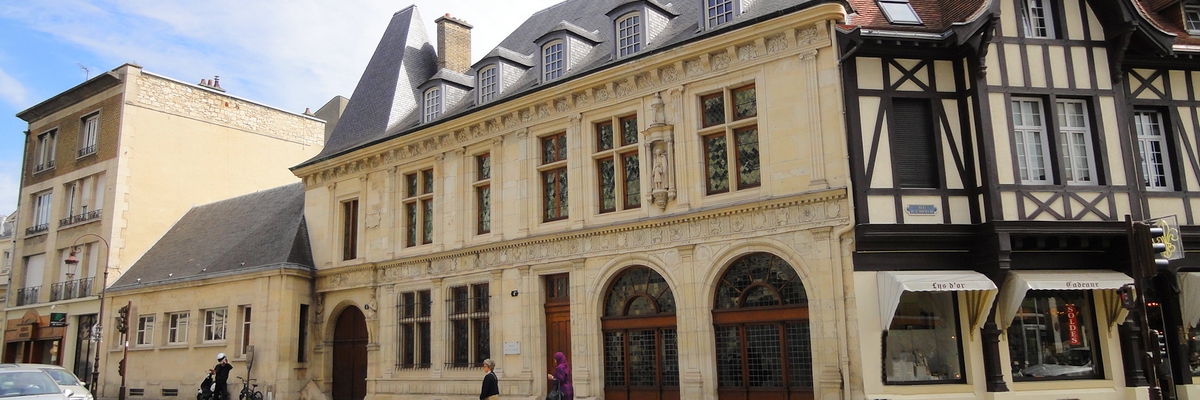
This mansion – an architectural jewel of the Renaissance period- was built in the same style as the 16th century Castles of the Loire.
It witnesses the wealth of Rheims bourgeois families, who grew rich thanks to the trade of wool and drapery. The mansion was built for Henry Choilly, a master draper, between 1545 and 1556. It was bought by Monsieur de la Salle, whose grandson, Jean-Baptiste, was born in this house on 30 April 1651.
Because of a sharing among heirs, he lived here only a dozen years. After a few decades, the mansion -then called “Hotel de la Cloche”- was no longer a property of the de la Salle family.
Together with the lower quality adjacent buildings, it was successively bought by various owners. Shops spread over the street, as well as warehouses and workshops in the yard.
On the eve of the First World War (1914-1918), the Fossier House purchased the mansion; that company is well-known in Rheims for the making of the “pink biscuits”.
Bombings and fires caused serious damage on a large part of the city and the mansion nearly disappeared. It was saved from destruction thanks to the tenacity of the owner; his personal interest in preserving a commercial position of first choice and a remarkable artwork led him to restore it in an exemplary way.
In the aftermath of World War II, the methods of producting and trading goods changed; the owner decided to relocate and the Brothers of the Christian Schools were asked to buy the birthplace of their founder in 1956. A part of the new “Hotel de la Salle” became a museum. An outstanding renovation and the creation of a “scenographic museum” make it, today, a real center of interest for many visitors from around the world.


